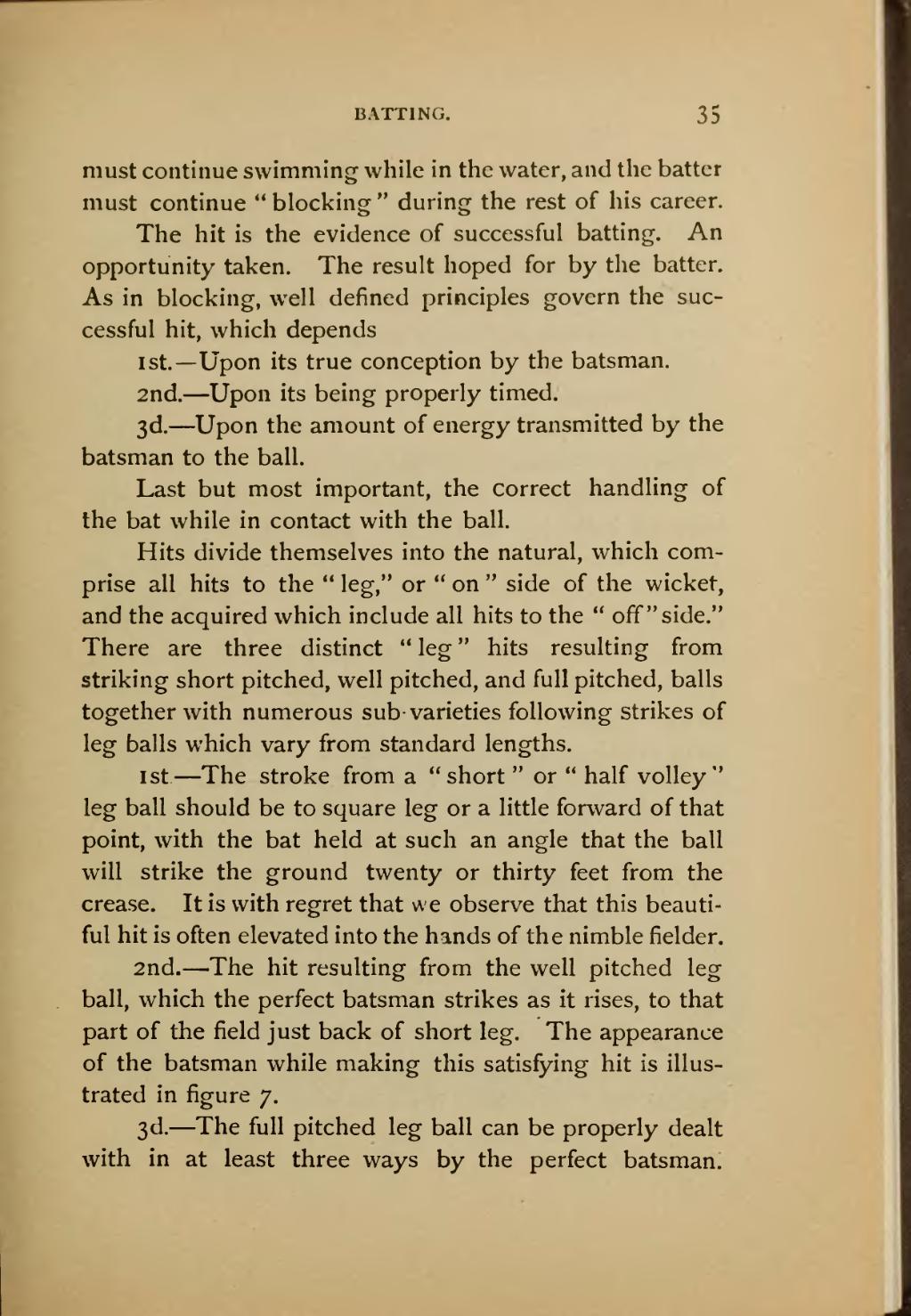must continue swimming while in the water, and the batter must continue "blocking" during the rest of his career. The hit is the evidence of successful batting. An opportunity taken. The result hoped for by the batter. As in blocking, well defined principles govern the successful hit, which depends
1st.—Upon its true conception by the batsman.
2nd.—Upon its being properly timed.
3d.—Upon the amount of energy transmitted by the batsman to the ball.
Last but most important, the correct handling of the bat while in contact with the ball.
Hits divide themselves into the natural, which comprise all hits to the "leg," or "on" side of the wicket, and the acquired which include all hits to the "off"side." There are three distinct "leg" hits resulting from striking short pitched, well pitched, and full pitched, balls together with numerous sub-varieties following strikes of leg balls which vary from standard lengths.
1st—The stroke from a "short" or "half volley" leg ball should be to square leg or a little forward of that point, with the bat held at such an angle that the ball will strike the ground twenty or thirty feet from the crease. It is with regret that we observe that this beautiful hit is often elevated into the hands of the nimble fielder.
2nd.—The hit resulting from the well pitched leg ball, which the perfect batsman strikes as it rises, to that part of the field just back of short leg. The appearance of the batsman while making this satisfying hit is illustrated in figure 7.
3d.—The full pitched leg ball can be properly dealt with in at least three ways by the perfect batsman.

